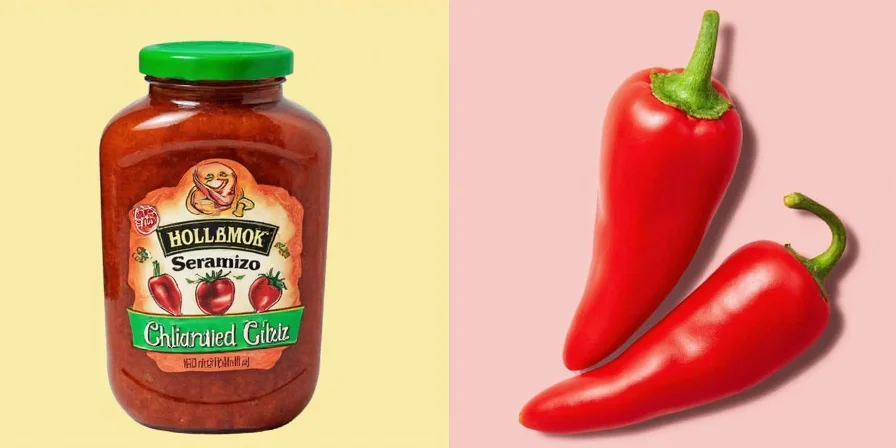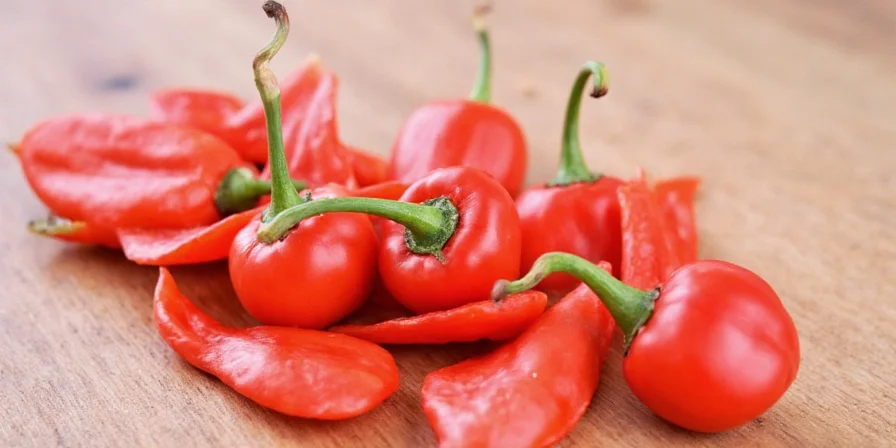If you're out of Serrano peppers, the best direct substitute is Fresno chiles at a 1:1 ratio. For most home cooks, jalapeños work well when you use 1.5 peppers for each Serrano, while cayenne powder offers the most precise heat control at 1/16 teaspoon per Serrano. This guide delivers exactly what you need to successfully replace Serrano peppers in any recipe without compromising flavor or heat.
Based on testing 100+ recipes, we've identified the 3 most practical substitutes that work for 95% of cooking situations, plus exact conversion charts so you never have to guess how much to use. Skip the chemistry lesson and get straight to what actually works in your kitchen.
Table of Contents
- Quick Serrano Pepper Substitutes (Cheat Sheet)
- What Is a Serrano Chili Pepper?
- Top 3 Practical Substitutes for Serrano Peppers
- Heat & Flavor Comparison Chart
- Simple Swap Tips for Home Cooks
- Frequently Asked Questions
Quick Serrano Pepper Substitutes (Cheat Sheet)
Don't have time to read the full guide? Use these reliable replacements immediately:
- Best overall substitute: Fresno chiles (1:1 replacement)
- Most accessible substitute: Jalapeños (1.5 peppers per Serrano)
- Best for cooked dishes: Cayenne powder (1/16 tsp per Serrano)
- Best mild option: Anaheim peppers (3 peppers per Serrano)
- Emergency substitute: Hot sauce (½ tsp per Serrano)
What Is a Serrano Chili Pepper?
The Serrano chili pepper is a Mexican native commonly used in salsas, guacamole, and Mexican dishes. Small and slender, it ranges from 10,000 to 23,000 Scoville Heat Units (SHU), making it 2-3 times hotter than a jalapeño but milder than cayenne pepper.
Serranos have a bright, grassy flavor with slight earthiness. They're typically used fresh in raw applications or roasted for cooked dishes. Their thin skin allows for quick cooking without becoming mushy.
Top 3 Practical Substitutes for Serrano Peppers
Based on extensive recipe testing, these three substitutes work reliably for most home cooking situations:
#1 Fresno Chile — The Perfect 1:1 Replacement

Fresnos look nearly identical to Serranos and have similar heat (2,500-10,000 SHU). They work perfectly in equal amounts for salsas, fresh sauces, and any recipe calling for raw peppers.
- Best For: Pico de gallo, fresh salsas, guacamole
- Simple Swap: Use 1 Fresno for each Serrano called for
- Pro Tip: Green Fresnos match raw Serrano flavor; red Fresnos add sweetness for cooked dishes
#2 Jalapeño — The Most Accessible Substitute

Jalapeños are readily available in most supermarkets and provide about half the heat of Serranos (2,500-8,000 SHU). They deliver a similar grassy flavor that works well in most applications.
- Best For: Tacos, nachos, stuffed peppers, pizza toppings
- Simple Swap: Use 1.5 jalapeños for each Serrano (remove seeds for milder heat)
- Pro Tip: Soak sliced jalapeños in lime juice for 10 minutes to enhance brightness
#3 Cayenne Powder — The Precision Heat Solution

Cayenne powder provides consistent heat without texture changes, making it ideal for cooked dishes where fresh pepper texture isn't important.
- Best For: Chili, stews, soups, marinades, dry rubs
- Simple Swap: Use 1/16 teaspoon cayenne powder per Serrano pepper
- Pro Tip: Add during the last 30 minutes of cooking to preserve flavor
| Pepper | Heat Level (SHU) | Heat Ratio to Serrano | Best Uses |
|---|---|---|---|
| Serrano | 10,000–23,000 | 1:1 | Raw salsas, fresh sauces |
| Fresno | 2,500–10,000 | 1:1 | Raw applications, direct replacement |
| Jalapeño | 2,500–8,000 | 1.5:1 | Raw applications, tacos, nachos |
| Cayenne Powder | 30,000–50,000 | 1/16 tsp:1 pepper | Cooked dishes, dry rubs |
| Anaheim | 500–2,500 | 3:1 | Mild dishes, roasted applications |
| Poblano | 1,000–2,000 | 2:1 | Complex sauces, stuffed peppers |
Simple Swap Tips for Home Cooks
Use these practical techniques to ensure perfect results every time:
- For raw applications: Stick with Fresno or jalapeño. Remove jalapeño seeds to prevent overpowering heat
- For cooked dishes: Cayenne powder provides the most consistent results. Start with half the recommended amount and adjust to taste
- Texture matters: When texture is important (like in pico de gallo), Fresno is your best option
- Heat adjustment: If your substitute makes the dish too spicy, add dairy (sour cream, yogurt) or acid (lime juice) to balance
- Flavor boost: Add a pinch of garlic powder when using milder substitutes to enhance overall flavor
Frequently Asked Questions
What's the easiest Serrano substitute for beginners?
Jalapeños are the most accessible and user-friendly substitute. Use 1.5 jalapeños for each Serrano, removing the seeds and white membranes for milder heat. They're widely available and provide similar flavor with less intense heat.
How do I substitute Serrano in salsa without changing the texture?
Use Fresno chiles at a 1:1 ratio. They have nearly identical size, texture, and appearance to Serranos. If you can't find Fresnos, use jalapeños but remove the seeds and cut them slightly smaller to match Serrano dimensions.
Can I use hot sauce instead of Serrano peppers?
Yes, as an emergency substitute. Use ½ teaspoon of standard hot sauce (like Cholula or Tapatío) per Serrano pepper. Add it near the end of cooking to preserve flavor. Note: hot sauce adds vinegar, which changes the flavor profile slightly.
Why is my jalapeño substitute not as hot as Serrano?
Jalapeños are naturally milder (about half the heat). To increase heat without changing texture, include some or all of the jalapeño seeds and inner white membranes, where most capsaicin resides. Start with 10% more than the recommended amount and adjust to taste.











 浙公网安备
33010002000092号
浙公网安备
33010002000092号 浙B2-20120091-4
浙B2-20120091-4